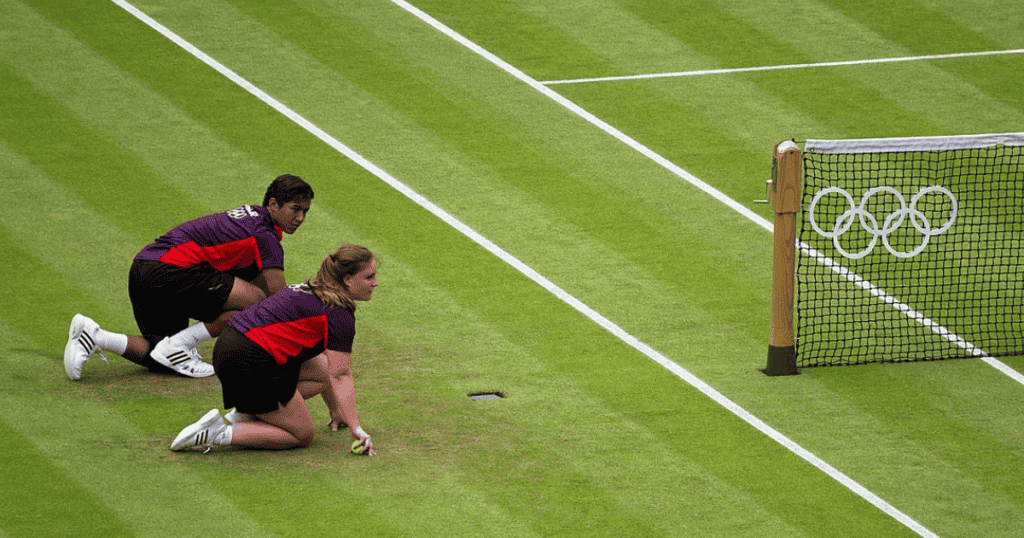Ball Boy in Racket Sports
When watching a tennis match, badminton game, or any other racket sport, it’s easy to get lost in the dazzling skills of the players.
However, there’s an equally important yet often overlooked team working diligently behind the scenes: the ball boys. These swift and attentive youngsters play a vital role in keeping the game flowing seamlessly.
Who Are the Ball Boys?
Ball boys, often referred to simply as “ball kids,” are young individuals, usually ranging from ages 12 to 20, responsible for retrieving and supplying balls to players or officials during a match. They’re present in many racket sports, with tennis being the most prominent.

Why Are They Essential?
- Maintaining Game Pace: Tennis, in particular, has a rhythm. Players often rely on a consistent pace to maintain focus and strategy. Ball kids ensure that players don’t have to break their concentration to fetch stray balls.
- Safety: Loose balls on the court pose a tripping hazard. By swiftly clearing them away, ball kids help prevent potential injuries to the players.
- Player Assistance: Beyond supplying balls, ball kids also assist players with tasks like handing towels, offering water, or holding umbrellas during changeovers on particularly sunny or rainy days.
Examples of Their Role
Let’s walk through a couple of scenarios to better appreciate the job of a ball kid:
- Swift Retrievals: Imagine a tennis player hitting a fault on their first serve. The ball ricochets to the other side of the court. Before the second serve, the ball kid dashes out, retrieves the ball, and swiftly returns to their position, ensuring no disruption to the game’s flow.
- Quick Turnarounds: Consider a badminton match where a shuttlecock falls out of play. The server is ready for a new one. A ball kid, anticipating this need, already has a shuttlecock in hand, passing it to the player without a moment’s delay.
A Day in the Life of a Ball Kid
Becoming a ball kid is not just about speed and agility; it’s also about understanding the game, anticipating needs, and demonstrating impeccable focus. Training often involves:
- Learning the Rules: Ball kids familiarize themselves with game rules to understand when and how to intervene without disrupting a point or rally.
- Physical Training: Agility, speed, and endurance drills are crucial. Ball kids often run, squat, and roll balls with precision during their shifts.
- Simulated Scenarios: Training often includes mock games where ball kids practice their roles in real-time settings, learning to anticipate player needs and respond swiftly.
Challenges Faced
While the role might seem straightforward, it’s not without challenges:
- Weather Conditions: Be it scorching sun or pouring rain, ball kids are on duty. They brave the elements, ensuring matches run smoothly regardless of the weather.
- Pressure Situations: High-stakes matches, especially finals of major tournaments, come with immense pressure. A single disruption can throw off a player’s concentration. Ball kids train to be flawless, especially during these tense moments.
- Physical Demand: Continuous squatting, running, and standing can be taxing. Yet, ball kids maintain their energy and enthusiasm from the first serve to the match point.
Summary
Ball boys, the unsung heroes of racket sports, play a pivotal role in ensuring the smooth progression of games. From retrieving balls and shuttlecocks to assisting players with various needs, their contributions are invaluable.
Behind the scenes, they undergo rigorous training, both mentally and physically, to be at their best during matches. They brave challenges, from tough weather conditions to the pressures of high-stakes games.
So, the next time you enjoy a tennis or badminton match, take a moment to appreciate these dedicated youngsters who contribute significantly to the beauty and flow of the game.